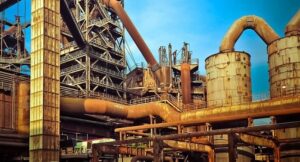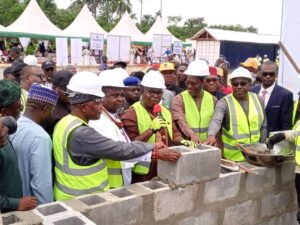
Nigeria witnessed about 604 building collapses between 1974 and May 30, 2024, according to the latest report from the Building Collapse Prevention Guild.
The report indicated that Lagos State recorded 57.28 per cent over the total collapse with over 346 buildings caving in the last 50 years.
The report stated, “Building collapses in Nigeria have been a significant issue over the years, with Lagos State accounting for 57.28 per cent of recorded incidents. This makes Lagos the most affected state, followed by Anambra with 3.98 per cent, Abuja with 3.65 per cent, and Oyo with 3.48 per cent.
“Interestingly, Taraba, Bayelsa, Gombe, and Yobe States reported their first recorded building collapses in 2022. Furthermore, states such as Zamfara, Taraba, Yobe, Bauchi, Bayelsa, Sokoto, Gombe, Katsina, and Kebbi have each experienced only one recorded building collapse.
“There were no recorded building collapses in 1971, 1975, and 1981. Despite the COVID-19 lockdown in 2020, Nigeria still recorded 45 building collapses, with Lagos accounting for 18 of these incidents, 40 per cent of the total.”
The report stated that 2022 saw the country’s highest number of building collapses.
It adumbrated, “The year 2022 saw the highest number of building collapses, with 62 incidents nationwide, and Lagos accounted for 20, or 32 per cent. In 2023, there were 52 recorded collapses across the country, with Lagos again leading with 17 incidents, representing 33 per cent. As of 2024, there have been 11 recorded building collapses, with Lagos having 5, Anambra 3, and Kano, Niger, and Plateau having 1 each.
“The first recorded building collapse in Nigeria occurred in October 1974 in Oyo State. This incident involved a multi-storey building that collapsed due to excessive loading, resulting in the death of 27 people. The tallest building collapse happened in Lagos on November 1, 2021, which tragically killed 52 people.”
On Thursday, May 30, 2024, another four-story building collapsed on Lagos Island, trapping an unknown number of people.
The incident occurred at Iga Iduganran, near the Oba of Lagos’ palace.
The Lagos State Commissioner for Information and Strategy, Gbenga Omotosho, confirmed the development on his X account.
According to Omotosho, eight people have been rescued.
“A four-storey building has collapsed at Iga Iduganran, Lagos Island. The Lagos State Emergency Management Agency officials have rescued eight people from the rubble. They are battling to retrieve two others from the rubble. The structure had been marked by LASBCA for evacuation,” Omotosho said.
That came less than a week after an 11-year-old girl and three persons lost their lives when a mosque that was hit by an excavator collapsed in the Papa Ajao area of the state.
Findings by the guild revealed that professional ineptitude ranging from excessive loading, use of substandard materials, faulty design, poor workmanship and weak foundation accounted for a significant fraction of the collapses recorded during the period under review.
One of the most tragic of the cases was the 21-storey building collapse along Gerrard Road in the Ikoyi area of Lagos State on November 1, 2021.
The pioneer President of the Building Collapse Prevention Guild, Kunle Awobodu, blamed weak regulations for the incessant cases of building collapse in Lagos State.
According to Awobodu, many quacks have been emboldened by the fact that regulatory bodies and relevant apparatuses of government have been unwilling or unable to prosecute and convict persons found culpable of professional ineptitude regarding incidents of building collapse.
He noted, “I was part of the committee that created some of the agencies. There is a difference between policy formulation and implementation. One of the things we discovered was that the staff strength of the building control agency was low compared to the vastness of the Lagos built environment.
“Quackery is also a major problem. To forestall the frequency of collapsed buildings, developers must submit their approval plan to undergo an approval process, including checking the structural design to identify anomalies.
“Once the approved building plans are returned to their owners, the system does not follow up to check and ensure that those who will handle the construction are professionals. So, the construction will just be given to anybody who claims to have experience in building construction.”
SOURCE: PUNCH




